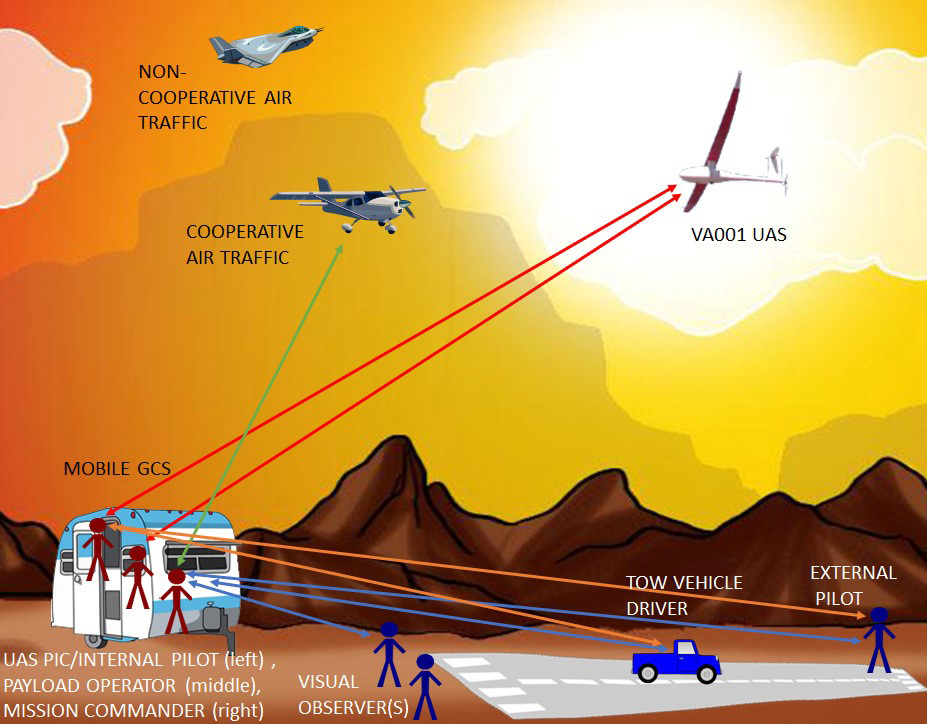News at the HPC²
FAA Announces an Additional $7.5M in 19 UAS Research Grants to ASSURE Research Universities
August 25, 2020 U.S. Transportation Secretary Elaine L. Chao announced that the Federal Aviation Administration (FAA) is awarding $7.5 million in research, education, and training grants to universities that comprise the agency’s Air Transportation Center of Excellence (COE) for Unmanned Aircraft Systems (UAS), also known as the Alliance for System Safety of UAS through Research Excellence (ASSURE).
U.S. Transportation Secretary Elaine L. Chao announced that the Federal Aviation Administration (FAA) is awarding $7.5 million in research, education, and training grants to universities that comprise the agency’s Air Transportation Center of Excellence (COE) for Unmanned Aircraft Systems (UAS), also known as the Alliance for System Safety of UAS through Research Excellence (ASSURE).“This $7.5 million federal investment will fund university research on the safe integration of drones into our national airspace,” said U.S. Secretary of Transportation Elaine L. Chao.
There are currently 1.65 million recreational and commercial drones (PDF) in the active UAS fleet. That number is expected to grow to as high as 2.31 million by 2024 (PDF). The grants are aimed at continuing and enhancing the safe and successful integration of drones into the nation’s airspace.
The following information summarizes the 19 grant awards for the eight projects. The COE universities received a total of $7,495,178 to advance specific goals and projects. This is the third round of ASSURE grants for Fiscal Year (FY) 2020. The grants announced today bring the FY 2020 year-to-date award amount for this COE to $13,363,638. Today’s grant awards include:
Validation of Low-Altitude Detect and Avoid Standards–Safety Research Center
The tasking for this work validates prior research in the performance of human pilots to detect other air traffic, assesses the potential for conflict, and analyzes potential maneuver options for avoidance against an intruder aircraft when a potential conflict exists.
-
Mississippi State University – lead university$1,500,000
This research is focused on safely integrating UAS operations with airport operations, on and around airport surfaces with manned aircraft operations, and on and around the same surfaces. The depth of research expertise at the universities involved affords the selection of a set of experts to spearhead a specific use case and shepherd the constructs of each use case through completion.
-
University of Alaska, Fairbanks – lead university$401,999
-
Kansas State University$220,000
-
New Mexico State University$320,000
-
University of Alabama, Huntsville$219,815
-
University of North Dakota$320,000
The purpose of this grant is to provide research focused on identifying research opportunities and gaps between SARP stakeholders, coordinating awareness of the research opportunities, and identifying ways stakeholders can work together to resolve research gaps to the benefit of the research community.
-
University of Alabama, Huntsville – lead university$70,383
The research team consisting of the University of Kansas and the Ohio State University will work together to:
1. Identify severities of UAS flight upset due to wake turbulence to help the FAA assess risk of upset and to develop policy, guidance, and procedures for mitigating UAS wake turbulence encounters; and
2. Demonstrate safe flutter flight testing procedures for UAS.
-
University of Kansas – lead university$800,000
-
The Ohio State University$698,921
The vision to revolutionize mobility within metropolitan areas is a new frontier in aviation. Supporting accessible air transport systems for passengers and cargo by working with the urban air mobility (UAM) community to identify and address the opportunities and key challenges ahead is an emerging role for the FAA.
-
Wichita State University – lead university$450,000
-
Mississippi State University$315,000
-
North Carolina State University$184,999
-
Embry-Riddle Aeronautical University$249,923
Unmanned Aircraft Systems (UAS) technology is evolving rapidly and the FAA is working to keep pace with industry and to integrate UAS into the National Airspace System. A gap in UAS integration is having standards developed by industry which the FAA can use for policy and rulemaking activity.
-
Embry-Riddle Aeronautical University – lead university$264,900
-
University of North Dakota$235,000
The proposed work will complete a literature review of cybersecurity concerns and resulting potential safety issues with the integration of UAS into the National Airspace System (NAS). The aim of the work is to support the establishment of a baseline model to identify and assess cybersecurity related risks of integrating UAS into the NAS and undertake a survey of strategies for managing such risks.
-
Oregon State University – lead university$200,000
-
New Mexico State University$150,000
-
University of North Dakota$144,238
The tasking for this work operationally validates that the ASTM International (ASTM) Remote Identification (Remote ID) Broadcast standards satisfy stakeholder needs. The Notice of Proposed Rulemaking on Remote ID states that the proposed rulemaking is intended to facilitate onboard pilot awareness of small Unmanned Aircraft Systems (sUAS) and to also facilitate certain Detect and Avoid technologies.
-
Mississippi State University – lead university$750,000
The Centers advance many of the administration’s goals in transportation and education.
Submitted by the FAA.gov/news
